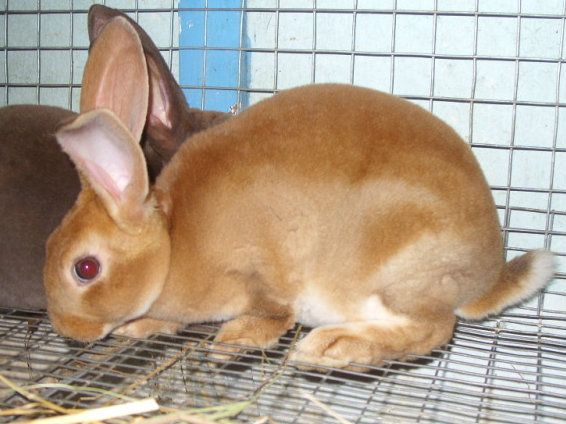ReiLossefalme":14090igr said:
What is the kit's color genetics? Or what were the parents?
The Red is a black Agouti, with the ee non-extension genes that prevent the expression of black, differentiating it from Castor. A_B_C_D_ee
The Amber is a Chocolate Agouti. A_bbC_D_E_
Actually Castor is the black agouti. Red is the non extension, removing the black surface color. I fully understand how each one is created, genotypically, but phenotype is the issue, and how to distinguish what looks from what actually is.
The parents are castor and the same mystery color as the kits. Nothing in the pedigree differentiates getting a red or an amber, both are equally likely because they both can come from castors. With the ee being hidden, it's easy to have no reds in the actual pedigree and still come up with red. There are no chocolates in the pedigree, but the chocolate is his litter mate, from all of the lilacs. So much dilute, easy to get a chocolate agouti.
More importantly, because both can come from castors, the standard is not clear as to what is a real amber, and what is just an incorrect red. I either have an incorrect amber or a sooty red.
__________ Tue Aug 07, 2012 10:02 pm __________
caroline":14090igr said:
The other thing about RED is that the good ones have the "ww" wide band gene which is what makes the white belly color "disappear" and be "red"
An this is my problem, if it is a red, it should not have a white belly, nor should it be agouti marked. But this one is.
__________ Tue Aug 07, 2012 10:06 pm __________
caroline":14090igr said:
My problem is that I ended up with the "e" non extension gene in the original buck that I bought, who was actually broken black tort, I was so ignorant that I thought he was broken amber. So I used him on everything and now have non-extension all over the place. Soooo... I get a lot of beautiful torts... not showable

but I'm continuing on... The second buck that I bought, who REALLY was and amber, ALSO carried that non-extension gene. So, FOR SURE, it's everywhere in my barn. The lady that I got him from told me she had wideband in her lines. She also told me some other stuff that turned out to be inaccurate. So I am soldiering on without her advice these days and STILL trying to figure this whole amber/red/lynx/cream thing out. I know that I haven't had any kits that looked "red" without white bellies but I'm pretty sure that I do have some RED rabbits. The backdoor way to do this and be able to show something, until I can figure out the wide band thing, is to have BROKEN buns. Then they CAN have white bellies. Oh well, it's a good thing I like such variety, cuz I got it!
And that's where this gets serious. I don't want wide bands messing up my castors. Though I'd love some torts to play with. Also, if it really is an amber, I'm on my way to lynx, faster than I thought. It's true about the brokens, and if it comes to that I will, but the castor line is precious, just got a new doe, so I don't want a mess. If I wait and see, perhaps the kits will develop rings? Or maybe they have them they are just faint.























































